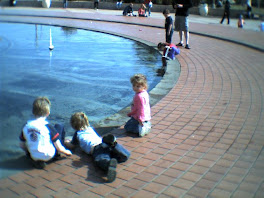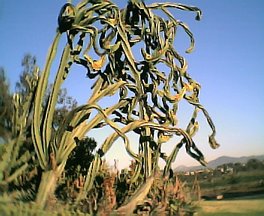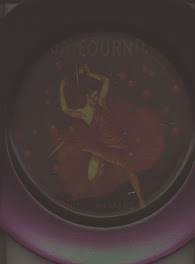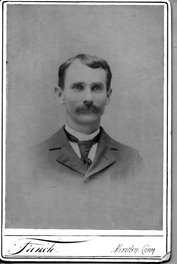MANDELA’S WAY
FIFTEEN LESSONS ON LIFE, LOVE, AND COURAGE
BY RICHARD STENGEL
CROWN PUBLISHERS, RANDOM HOUSE, NEW YORK 2009
Pp 121-122
(The brutal head of the prison in which Mandela spent so many years was being transferred.)
“Badenhorst said to me something like, ‘I just want to wish you people good luck.’ He said this like a human being, and I was a bit taken aback by his moderate and even considerate tone. I must say, that was a bit of a surprise. I thanked him. I thought about this for a long time afterward. What it basically showed me is that these men were not inhuman, but their inhumanity had been put upon them. They behaved like beasts because they were rewarded for such behavior. They thought it would result in a promotion or advancement. That day, I realized that Badenhorst was not the man he seemed to be, but a better man than how he had behaved.”
This epiphany goes to the heart of Mandela’s belief about what makes us human. He was a better man than how he had behaved. His motives were not as cruel as his actions. No one is born prejudiced or racist. No man, he suggests, is evil at heart. Evil is something instilled in or taught to men by circumstances, their environment, or their upbringing. It is not innate. Apartheid made men evil; evil did not create apartheid.
While his colleagues saw their warders and jailers as monolithic, the embodiment of the heartless apartheid system, Mandela generally tried to find something decent and honorable in them. Ultimately, he came to see them as victims of the system as well as perpetrators of it.
My Comment:
These reflections show the attitudes which helped keep South Africa from plunging into national civil war on racial lines. Mandela convinced enough people that a new government had to care about all the people. This empowered Reconciliation, in which police apologized for their actions, and families at least learned what had happened to their relatives. Bishop Desmond Tutu’s role came out of his experience as a leader of a religion which teaches that confession, acknowledgment of responsibility with intent to reform, precedes forgiveness. In order to live with each other there was a psychological and spiritual necessity to grieve together. There had always been many, many people of all races who had struggled for justice, refusing to demonize each other.
We have been reflecting on evil at my church. An important thought, attributed to Martin Luther King Jr., is that there is a little good in the worst of us, and a little evil in the best of us. This insight has emerged in many traditions through the centuries. Mandela’s biographer interprets the passage above as meaning a system, a guiding structure, can bring out very different aspects of an individual’s character and behavior. Therefore, changing the system tends to change people’s behavior. It leaves hanging the question of whether the organizers of a repressive system are evil. Perhaps for Mandela that is not the point. The point is to move forward with opportunities for people to live in dignity, negotiate with each other without violence for the goods, and the good, of the world.
Just Learning

Kitchen Studio
Monday, February 28, 2011
Friday, February 18, 2011
Fashion and Faith
BOOK REVIEW 1
VISIBLY MUSLIM:
FASHION, POLITICS, FAITH
EMMA TARLO
BERG, OXFORD AND NEW YORK, 2010
“Visibly Muslim,” was featured on NPR book notes in February 2011. I was attracted by the hope of increasing my understanding of, and communication with, Muslim women in San Diego and elsewhere in the United States. While anthropologist Tarlo concentrates on the UK, mostly London, the insights are transferable.
“Muslim,” or “Islamic,” includes enormous variety of religious practice, ethnicity, culture and philosophy. I was deeply impressed by several young women who tell their stories of choosing clothing to express their identities as Muslim Americans or Muslim Europeans. They are thoughtful, playful, assertive women, active citizens of democracies. Several honor more than one culture and race as part of their origins, so that they are leaders in exploring how multiculturalism can enrich society.
How they perceive themselves may be in tension with how others perceive them. A hijabi, a woman who covers her hair, has become a target of abuse and assault in Europe as being associated somehow with terrorism. Photos of a woman whose whole head and figure are covered by the caftan-like abaya constantly accompany media coverage of terrorism.
A woman in jeans and tunic who winds a beautiful scarf around her head, leaving face and neck uncovered, may draw criticism from some Muslims who expect more covering, discomfort from some Westerners, or admiration from almost anyone.
Women, and men, are making an effort to affirm religious identity while being part of a global youth culture. T-shirts with Islamic messages, and hoodies with Groener-like graphics, surprised me. It reminds me of my own quandary as a Catholic school girl, wanting to be modest AND sexy, while clinging to wearing my Miraculous Medal around my neck.
It also surprised me to learn that in the UK, schools routinely adapt uniforms so that students from differing religions or cultures can meet their own dress standards, keeping the uniform’s colors. Schools consult with regional or national councils of religions and cultures to serve their local population.
This well researched book with its lively interviews and informative footnotes lives up to its promise to educate on fashion, politics, and faith in a world which includes 1.5 billion people whose religion is Islam.
Irene Grumman
February 18, 2011
VISIBLY MUSLIM:
FASHION, POLITICS, FAITH
EMMA TARLO
BERG, OXFORD AND NEW YORK, 2010
“Visibly Muslim,” was featured on NPR book notes in February 2011. I was attracted by the hope of increasing my understanding of, and communication with, Muslim women in San Diego and elsewhere in the United States. While anthropologist Tarlo concentrates on the UK, mostly London, the insights are transferable.
“Muslim,” or “Islamic,” includes enormous variety of religious practice, ethnicity, culture and philosophy. I was deeply impressed by several young women who tell their stories of choosing clothing to express their identities as Muslim Americans or Muslim Europeans. They are thoughtful, playful, assertive women, active citizens of democracies. Several honor more than one culture and race as part of their origins, so that they are leaders in exploring how multiculturalism can enrich society.
How they perceive themselves may be in tension with how others perceive them. A hijabi, a woman who covers her hair, has become a target of abuse and assault in Europe as being associated somehow with terrorism. Photos of a woman whose whole head and figure are covered by the caftan-like abaya constantly accompany media coverage of terrorism.
A woman in jeans and tunic who winds a beautiful scarf around her head, leaving face and neck uncovered, may draw criticism from some Muslims who expect more covering, discomfort from some Westerners, or admiration from almost anyone.
Women, and men, are making an effort to affirm religious identity while being part of a global youth culture. T-shirts with Islamic messages, and hoodies with Groener-like graphics, surprised me. It reminds me of my own quandary as a Catholic school girl, wanting to be modest AND sexy, while clinging to wearing my Miraculous Medal around my neck.
It also surprised me to learn that in the UK, schools routinely adapt uniforms so that students from differing religions or cultures can meet their own dress standards, keeping the uniform’s colors. Schools consult with regional or national councils of religions and cultures to serve their local population.
This well researched book with its lively interviews and informative footnotes lives up to its promise to educate on fashion, politics, and faith in a world which includes 1.5 billion people whose religion is Islam.
Irene Grumman
February 18, 2011
Subscribe to:
Posts (Atom)








